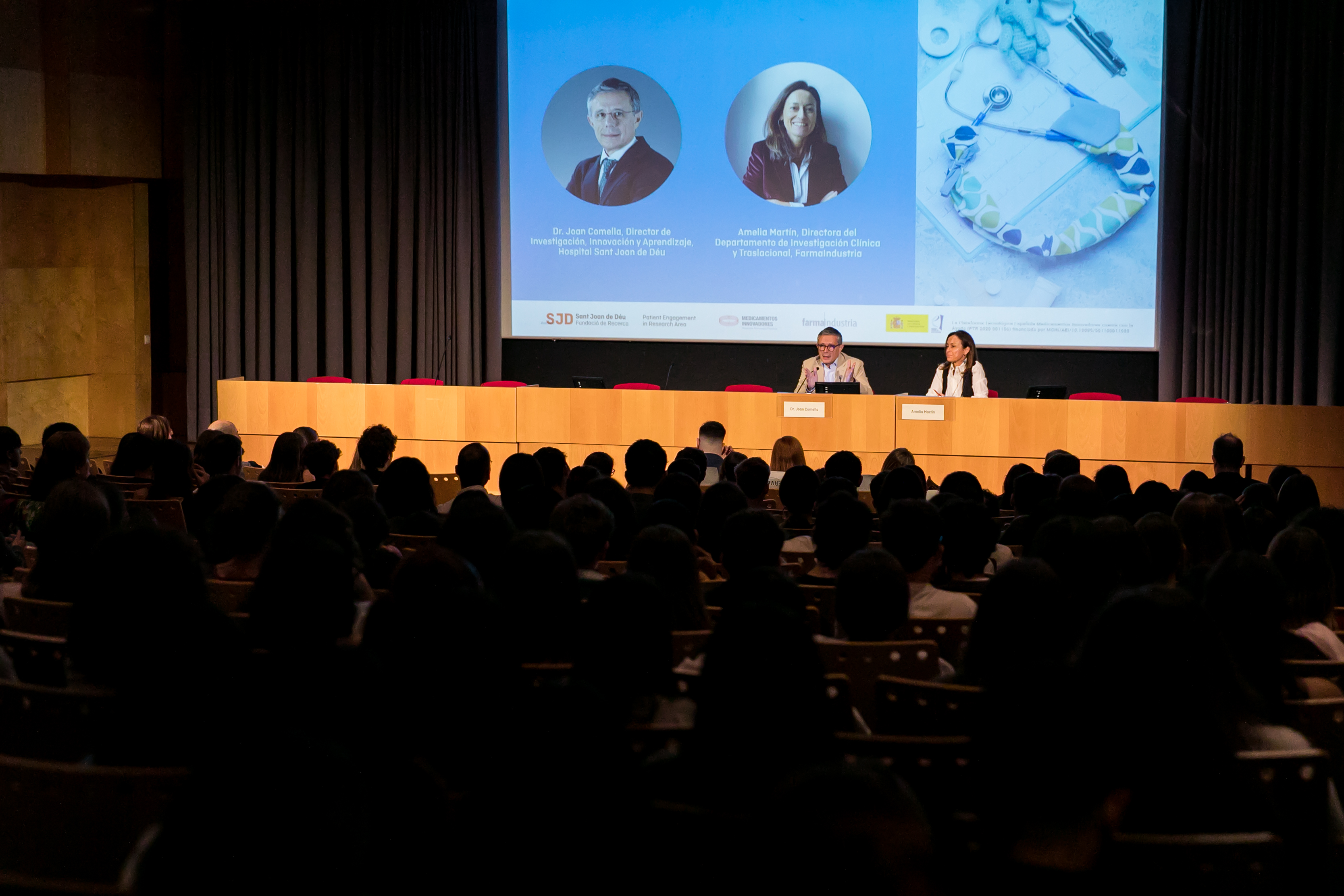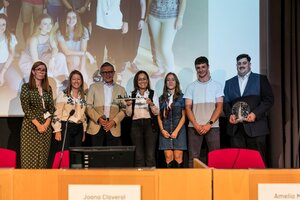Bringing Science Closer to Schools: A decade of training young people in clinical research and inspiring scientific vocations
Institut de Recerca Sant Joan de Déu and Farmaindustria launched this project ten years ago, and it has already reached more than 3,000 high school and vocational training students in Barcelona alone. This collaborative initiative between the pharmaceutical industry and research centers aims to raise awareness about what research and the development of new medicines involve.
Institut de Recerca Sant Joan de Déu and Farmaindustria held a new edition of the Bringing Science Closer to Schools program this Wednesday - a joint initiative between the pharmaceutical industry and research centers designed to explain how new medicines are developed to high school, secondary, and vocational students, while also helping to attract young talent and spark scientific vocations.
This year's session gathered, both in person and online, around 350 students from thirteen schools in Barcelona: Santa Maria dels Apòstols, Institut Celestí Bellera, Sagrada Família-Horta, Sant Francesc, Ceir-Arco Villarroel, Vedruna Gracia, Liceu Politècnic, Institut Alexandre Satorras, Institut Montbui, Institut FP Sanitària de Sant Pau and Institut Pedralbes.
Students had the opportunity to learn how new treatments are researched, how patient participation in clinical trials is structured, and what the environmental impact of such research is. They did so guided by experts from the Catalan research center and the pharmaceutical industry.
As Isabel Chacón, from Farmaindustria's Department of Clinical and Translational Research, explained, clinical research is a long, complex, and costly process that requires public-private collaboration to succeed. Moreover, it is evolving rapidly thanks to omics sciences and, above all, to technology, through the use of data, bioinformatics, and artificial intelligence.
Meanwhile, Begonya Nafría, coordinator of the Patient Engagement in Research Area at the Sant Joan de Déu Foundation, stressed that including the voice of patients and their families in research is no longer an option - it is a necessity. Listening to them and involving them throughout the research process -from study design to the communication of results- improves both the scientific quality and the social relevance of studies.

To mark the tenth anniversary of the initiative, both entities highlighted the success of the program Bringing Science Closer to Schools. "Farmaindustria launched a pilot initiative in 2015 to explain to patient organizations how the R&D process for new medicines works, and to inform them about regulation, ethics, clinical trial stakeholders, and activity in each therapeutic area," recalls Amelia Martín Uranga, Director of Clinical and Translational Research at Farmaindustria. "This project revealed how little awareness there is in society and inspired us to expand these training activities to broader audiences. In parallel," she continues, "through various meetings with Sant Joan de Déu, we saw the opportunity to develop educational sessions specifically for high school students. This gave rise to Bringing Science Closer to Schools, an open science project we are especially proud of - one that, in Barcelona alone, has reached over 3,000 young people."
According to Joan Comella, Director of Research, Innovation and Learning at SJD and Director of Institut de Recerca Sant Joan de Déu: "The combination of scientific excellence with the engagement of patients and their families is what truly drives innovation. At Sant Joan de Déu, we work so that pediatric clinical research not only generates knowledge but also hope and real improvements in children's lives."
The project's success has led to its expansion to Madrid, Málaga, Cantabria, and Gipuzkoa, and it has already trained over 5,000 students from dozens of schools. Not even during the pandemic years (2020 and 2021) was the initiative interrupted - it continued online and even served to explain the R&D of COVID-19 vaccines, while raising awareness about the social value of scientific research.

Students had the opportunity to learn how new treatments are researched, how patient participation in clinical trials is structured, and what the environmental impact of such research is.
